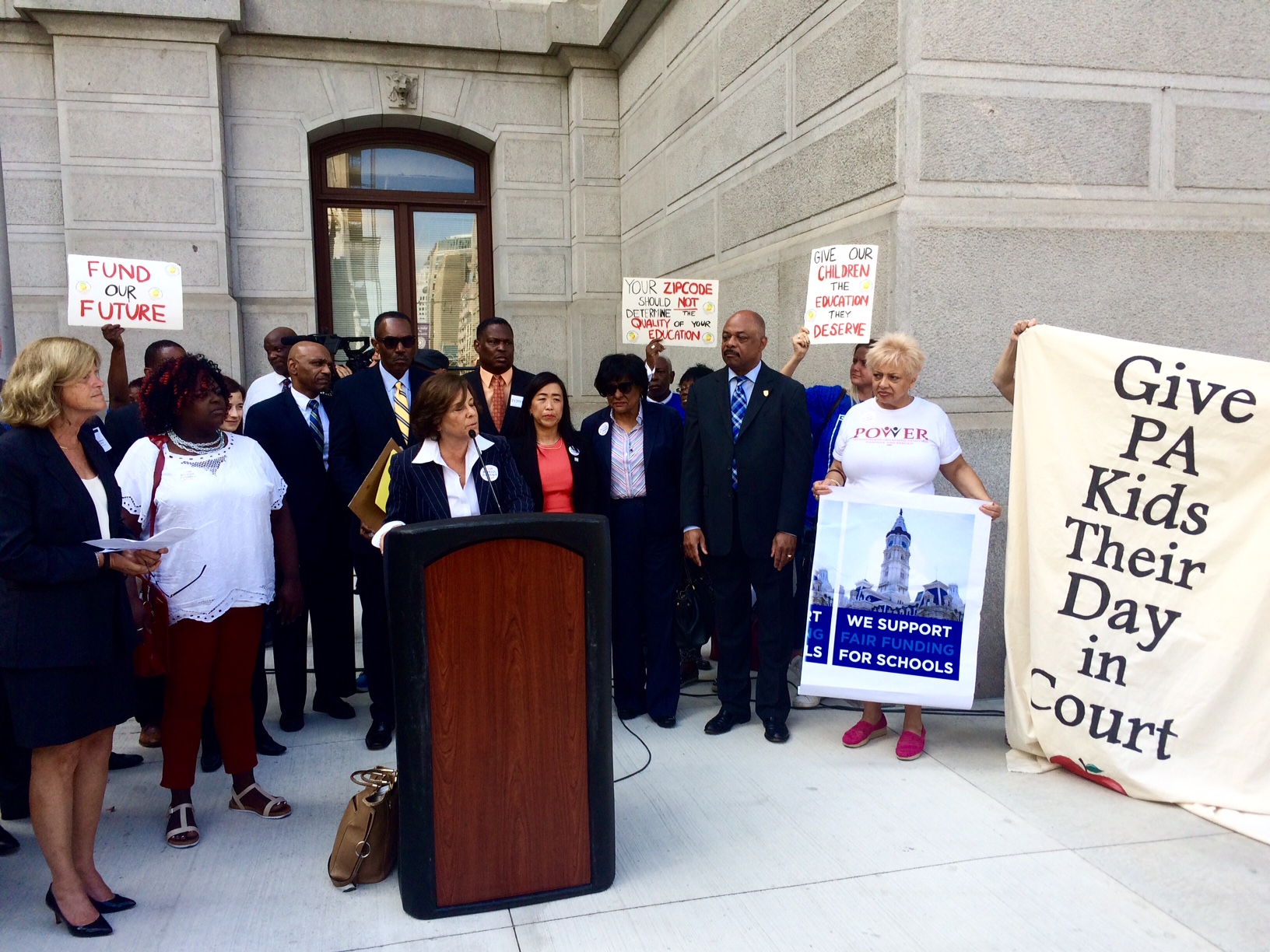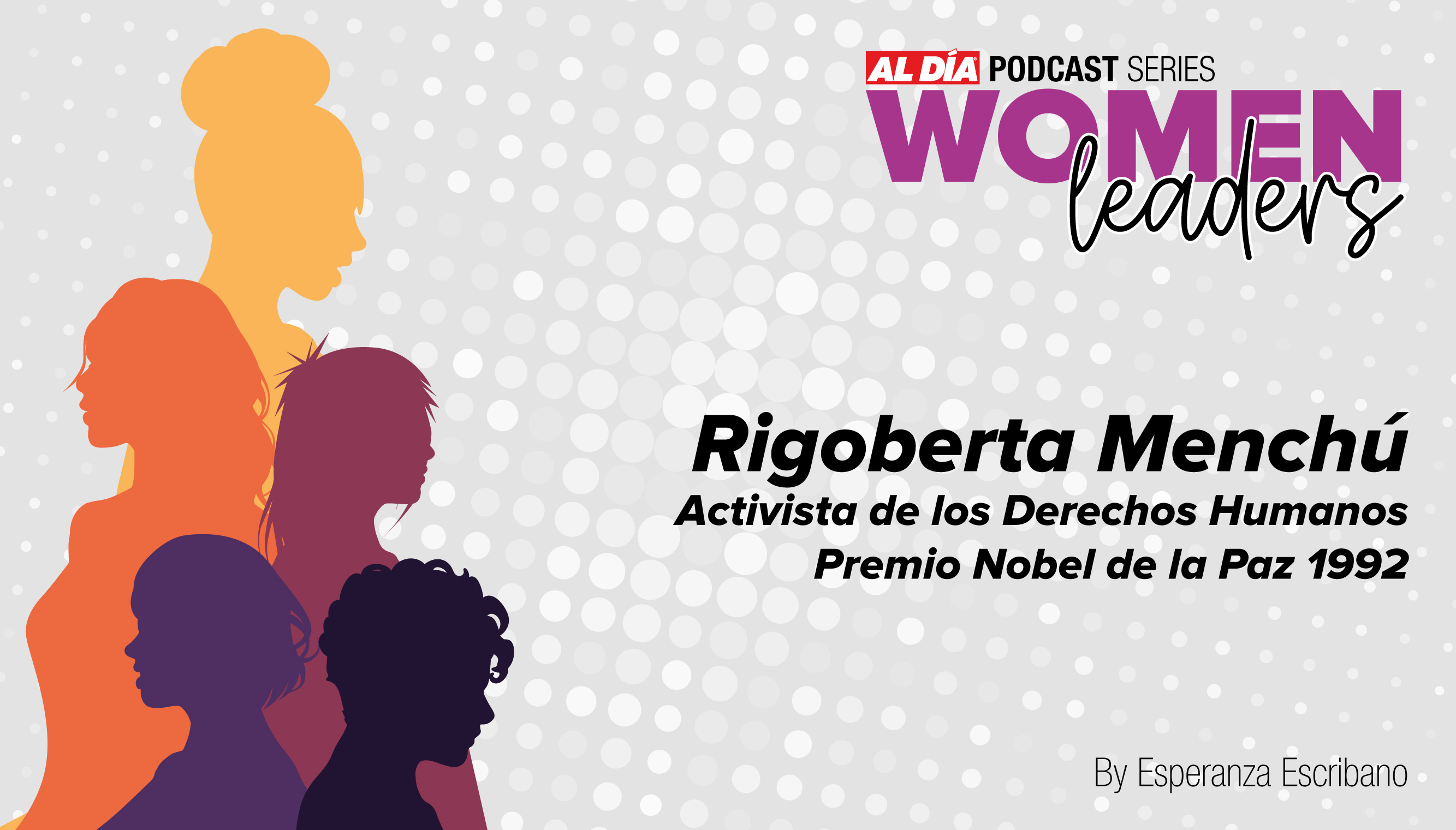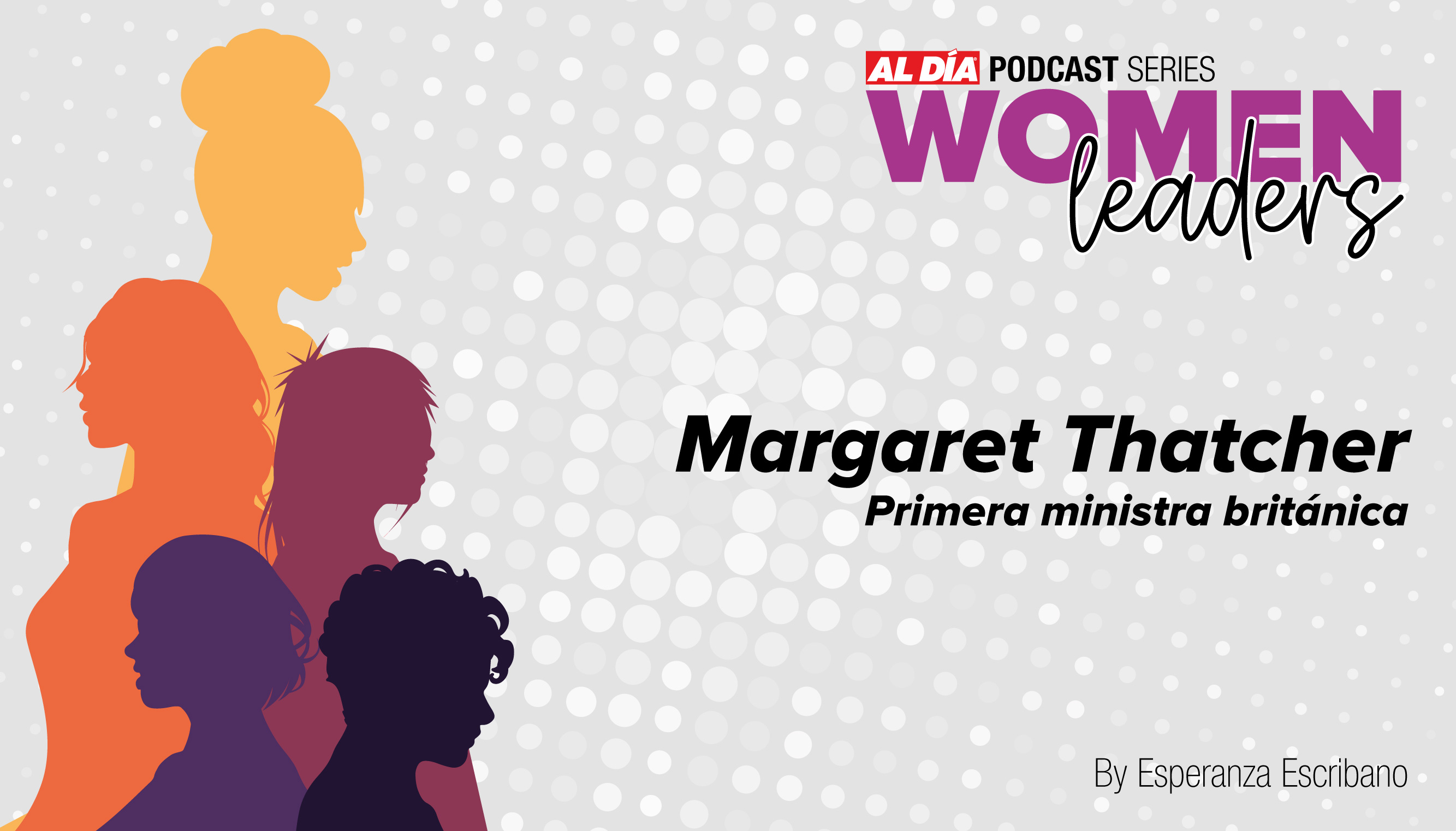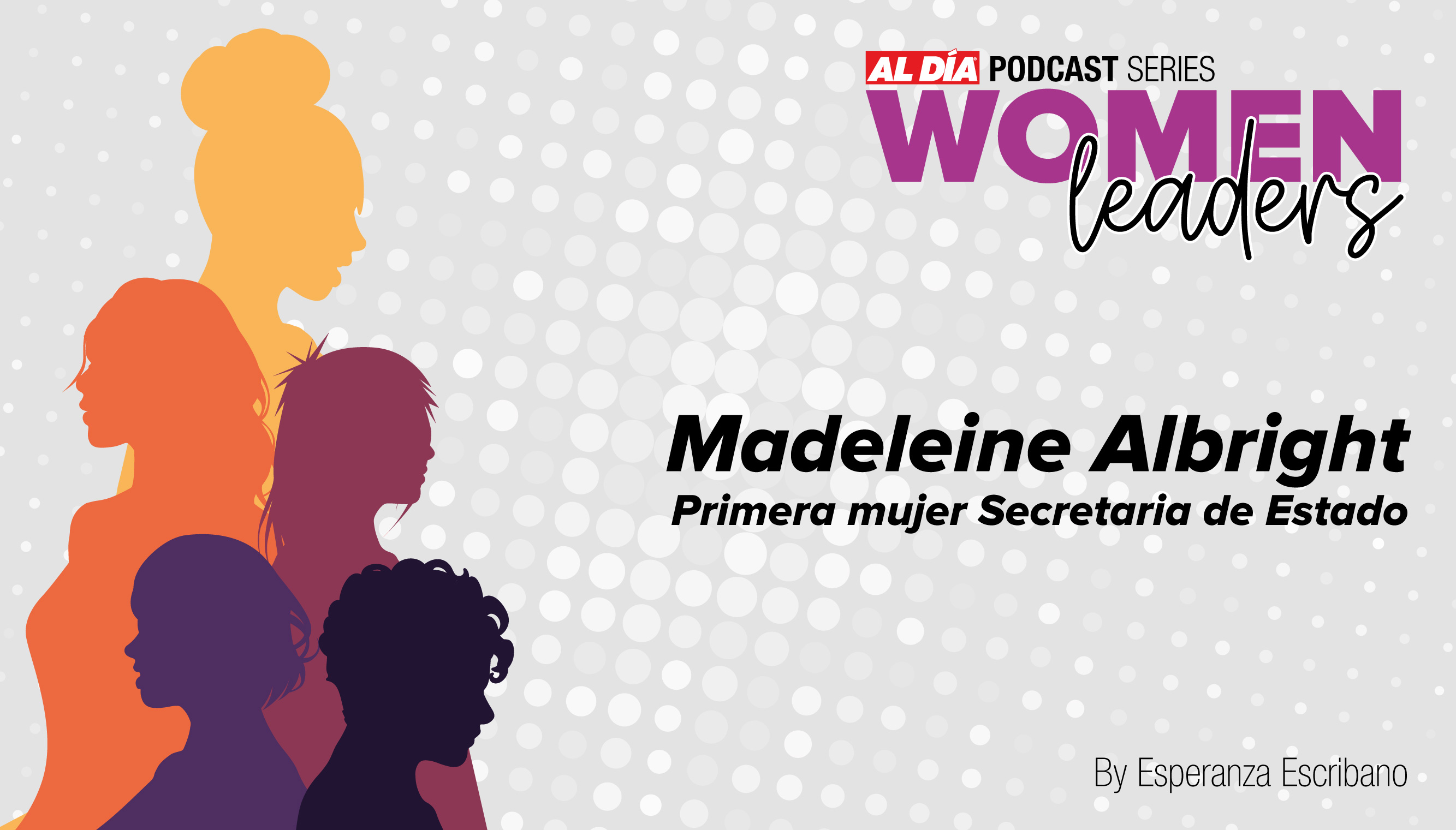
Explainer: Fair funding for public education goes to trial in Philadelphia
On Tuesday, September 13, Pennsylvania’s Supreme Court convened in City Hall to decide whether it would hear a lawsuit arguing that the current method of funding education at the state level violates the state constitution. The decision has yet to be announced, but the wait time is a chance to look closely at the context of the case and try to understand what’s at stake for the community.
On Tuesday, September 13, Pennsylvania’s Supreme Court convened in City Hall to decide whether it would hear a lawsuit arguing that the current method of funding education at the state level violates the state constitution. The decision has yet to be announced, but the wait time is a chance to look closely at the context of the case and try to understand what’s at stake for the community.
The case
William Penn School District vs. Pennsylvania Department of Education, as the case is formally known, was first filed in 2014 by two nonprofit groups, the Education Law Center and the Public Interest Law Center. The plaintiffs are six school districts, seven parents, the Pennsylvania Association of Rurals and Small Schools (PARSS), and the state chapter of the NAACP.
At a basic level, these groups are suing the state because there’s a significant difference in the amount of money which it allots to rich and poor school districts to fund their schools. In fact, before federal aid is factored in, Pennsylvania’s funding gap is the largest in the nation. Philadelphia and its exurbs are among the most shortchanged school districts.
"Multicultural/culturally relevant instruction will be limited, and in addition, programs and services for undocumented students and low-income Latinx students including college and career support centers, guidance counselors, and after-school opportunities will be minimally available."
Edwin Mayorga, a professor of education at Swarthmore College and founder of the Barrio Ed Project, highlighted some of the ways a lack of necessary funds for education impacts the Latino community of Philadelphia.
“If the city continues to be denied necessary financial support, the number of trained ESL and bilingual educators, the range of materials to support students, the number of sections of ESOL or bilingual classes a school can offer, and professional development opportunities for teachers, will be cut,” he wrote in an email. “Moreover, the provision of materials and courses for Africana studies, which should include sections on Afro-Latinos, and multicultural/culturally relevant instruction, will be limited. In addition, programs and services for undocumented students and low-income Latinx students including college and career support centers, guidance counselors, and after-school opportunities will be minimally available.”
Until recently, the most obvious reason for the persistence of huge funding disparities was the absence of a funding formula which comprehensively evaluated school districts’ needs. The Philly School Notebook reported in 2013 that school funding was decided in large part based on political clout, with lawmakers wording legislation so as to give extra funds only to certain favored districts.
But in 2014, the PA General Assembly established the Basic Education Funding Commision to investigate the potential creation of a funding formula, and in summer of 2015, one was passed in the legislature and approved by Governor Tom Wolf. The new formula takes into account many of the factors that most affect the Latino community in Philadelphia, like the size of the district, the relative wealth of its families, and the percentage of students learning English as a second language.
If basic education funding went up by $400 million every year, even the most optimistic estimates concede that it would take about 8 years for schools hurt by unfair funding to begin getting what they deserve.
The new funding formula is a major accomplishment with a major limitation: so far, it can only be applied to increases in the education budget. For instance, this June, Gov. Wolf increased basic education funding by $200 million, and all $200 million will be portioned out to different school districts following the formula. But the majority of basic education funding, over $5 billion carried over from previous years’ budgets, is not affected. Last year, the formula’s first, it was used to distribute only about 2.5% of funds. If basic education funding went up by $400 million every year, even the most optimistic estimates concede that it would take about 8 years for schools hurt by unfair funding to begin getting what they deserve.
Race isn’t a weighted factor in the fair funding formula, but it’s a major factor in the fair funding case. A new analysis commissioned by POWER (Philadelphians Organized to Witness, Empower and Rebuild) demonstrates how the current, limited use of the fair funding formula shortchanges students of color.
According to this graph (and others in the full study), if the state-approved fair funding formula were generally applied, many school districts serving predominantly students of color would be receiving thousands of dollars more than they are under the status quo. Meanwhile, even poorer districts serving predominantly white students continue, on average, to enjoy a disproportionate share of state funding.
What laws make the public school system look like this?
All public schools are funded by a combination of local, state and federal funds. From 1966 until 1983, Pennsylvania was legally expected to contribute about 50% of the funds necessary for each of its school districts to run. Currently, it contributes only 36%. Federal money, especially in poorer school districts, helps somewhat, but it’s local funds, raised mostly through property taxes, that are the majority of school districts’ resources. If homes are worth less, the locality must tax at a higher percentage so that schools can stay open, but it’s not always enough.
Parents and case plaintiffs Jamella and Bryant Miller have seen firsthand how reliance on property taxes can determine what a school is able to offer its students. In a Philly.com editorial from September 12, they explain how their move from Upper Moreland, a majority-white school district in Montgomery County, to William Penn, a majority-black school district in Delaware County, convinced them to join the suit:
Our working-class community pays our share of property taxes. Our property tax rate is 67 percent higher in William Penn than it was in Upper Moreland. But because William Penn has a smaller, poorer tax base, even with higher rates, the district raises less, and our children suffer while wealthier communities are able to raise excess money for robotics programs and rainy-day funds.
But if it were applied to just the existing basic education funding, without an influx of new cash, the fair funding formula would have to correct inequities through a process of redistribution. And not only is that idea quite unpopular politically—if it results in rich districts losing money, it’s also illegal, due a 1992 provision called “hold harmless” which makes it impossible to give a district less state money than it received the year before.
"Even with higher rates, the district raises less, and our children suffer while wealthier communities are able to raise excess money for robotics programs and rainy-day funds."
So what are lawyers arguing about?
September 13’s arguments weren’t yet meant to prove the unfairness of Pennsylvania’s school funding mechanism—the Supreme Court is still considering whether or not it has jurisdiction over the issue. In most other states where the fairness of school funding has been challenged, most recently in Connecticut, the courts have mandated major systemic changes. However, a lower court in Pennsylvania, citing the state constitution, has already dismissed the case once before on the grounds that public education is the General Assembly’s responsibility, not the judiciary’s.
For context, here’s the education clause of the state constitution: “The General Assembly shall provide for the maintenance and support of a thorough and efficient system of public education to serve the needs of the Commonwealth.” Lawyers representing the plaintiffs have focused more on its second half, which makes the General Assembly responsible for providing a “thorough and efficient system of public education,” which they say it has failed to do. They’re also invoking the PA constitution’s equal protection clause, since inadequate and unfair school funding primarily affects poor students of color.
According to Knorr, Pennsylvania's constitution merely makes the General Assembly responsible for opening the doors at public schools.
In 1997, an earlier fair funding case (Marrero v. Commonwealth—also featuring lawyers from the Public Interest Law Center) was dismissed because the governor’s office and the General Assembly agreed that the courts had no standards to measure questions of thoroughness and efficiency in education. But times have changed. The 2000’s trend of data-driven school reform has given rise to a wealth of official “adequacy” measures. In fact, the Public Interest Law Center has already used numbers published by the Basic Education Funding Commission (which the General Assembly itself established to research the fair funding formula) to calculate that Pennsylvania would need to spend at least $3.2 billion more to meet its own adequacy standards.
So in the hearing on the 13th, John Knorr, a lawyer with the Pennsylvania Attorney General’s office, made a bolder argument: that “no individual child has any specific right to an education at all,” at least not one that’s guaranteed under the state constitution. The document itself, he clarified, merely makes the General Assembly responsible for opening the doors at public schools. Knorr also held that the state’s standards for adequacy are still subject to change, and therefore not absolute enough to form the basis for a lawsuit.
How did people react?
The hearing was publicized by POWER and well-attended by education advocates of all stripes. The superintendent of schools from Erie, on the other side of the state, was present; so too was the author of POWER’s study on racial bias in basic education funding, many leaders of POWER’s staff, State Senator Vincent Hughes, Philadelphia Councilwoman Helen Gym, the heads of various nonprofit groups, and the entire middle-school population of Folk Arts-Cultural Treasures Charter School (FACTS).

“We’re a charter school, but we’re a public school,” said Ellen Somekawa, FACTS’ executive director, as her students chanted for fair funding in front of City Hall. “We wanted to take this moment to stand with public schools all across Pennsylvania that are suffering from inadequate funding and the inequality of funding.”
Maria Ortiz is a parent from the part of Point Breeze which used to send its children to Walter G. Smith School, which has since been closed down and is currently being considered for conversion into new residences. She was waiting outside the courtroom with a “SAVE SMITH SCHOOL” banner alongside her friend Wilma Frazier.
“People have actually been locked up because of bullying that’s going on in the schools, because they’re overcrowded,” explained Ortiz, speaking of the school closure’s effects on her community. “The children are not getting the education they should be getting because the schools aren’t fully staffed, and teachers are pulling out of their pockets to give supplies that the kids need.”
Pastor Melanie DeBouse, interim Co-Executive Director of POWER and pastor of a church in Germantown, weighed in on the emotional devaluation of education that a literal devaluation of the system has caused in her community. “Education is important, our state legislators have to value it, and when they demonstrate that value by putting adequate resources into our schools, then we’ll build a populace that has more consideration for what we do,” she said. “Our Latino population is dropping out because they just don’t get it. Why do I have to do this anyway? And that’s anybody’s question.”
"It has always been the court that brought justice to the oppressed in this country," said Dr. Joan Duvall-Flynn, President of the NAACP's Pennsylvania branch.
Speaking on the side of the state, Jeff Sheridan, the press secretary for Governor Tom Wolf, emphasized that Wolf plans to continue to increase education funding during his time in office, and furthermore, that it’s “the governor and the General Assembly’s role to do that work, not the courts.” In other words, Wolf does not believe the case should move forward.
But during the rally which followed the hearing, speakers put the day’s hearing in a different legal context: civil rights. “What we have in Pennsylvania is more than an opportunity gap, we have a value gap,” said NAACP Pennsylvania branch President, Dr. Joan Duvall-Flynn. The NAACP is one of the plaintiffs in the case.
“The NAACP has been in court for education for 107 years. It is the same battle today that they decided in 1954,” she said, referring to Brown v. Board of Education, when the desegregation of schools was ordered by the U.S. Supreme Court. “It is the same pain and need and desperation in generations of children. It has always been the court that brought justice to the oppressed in this country.”
The court has no deadline for its decision to hear or dismiss the case.










LEAVE A COMMENT: